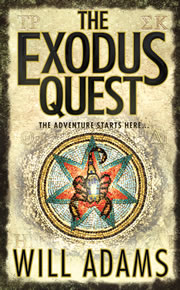
More about Akhenaten
The Eighteenth Dynasty pharaoh Akhenaten is intriguing for any number of reasons, not least because he was married to the beautiful Nefertiti; but he was of particular
interest to me as a writer of archaeological mysteries because, although his tomb has long-since been found, his body never has; and there have been credible suggestions
that it might have been relocated to another tomb nearby or in the Valley of the Kings. If so, one can only guess at what riches might have been buried with him. He was, after
all, a far more important pharaoh than Tutankhamen, who was his nephew, or son, or brother – or, knowing the ancient Egyptians, some combination of the three.
But Akhenaten is perhaps most famous for being the first monotheist. He worshipped a sun god called the Aten, and he built himself a new capital city called Akhetaten, now
known as Amarna. He took on and overthrew the existing religious establishment, which is why he’s sometimes known as the Heretic Pharaoh. But his revolution didn’t survive
him, and orthodoxy was quickly restored. Aten worship was banned, and many of Akhenaten’s followers recanted and became worshippers of the traditional gods once more.
We don’t know that all of them did, however, not least because there was disorder in Egypt at the time, in part due to this great power struggle, but also exacerbated by famine
and plague. So it’s quite possible that other Aten worshippers refused to recant were forced into exile or maybe even fled.
Plague. Monotheism. A flight out of Egypt. Sigmund Freud was one of several people to notice the similarities between this story and the biblical account of the Exodus.
He actually wrote a monograph called Moses and Monotheism in which he takes it almost for granted that the figure of Moses was based on Akhenaten. And the British
metallurgist Robert Feather took this on further, stirringly advocating a link between Akhenaten’s capital city at Amarna and the Essene settlement at Qumran in his book
The Copper Scroll Decoded, a fascinating read for all fans of Egyptian history.
All that said, the theory is highly controversial. Many experts place the Exodus several centuries earlier, during the time of the Hyksos; others a century or two later,
during the Nineteenth Dynasty. And there’s a strong school of thought that rejects the notion that the Exodus is real history at all.
I try my best to represent all these competing views in the book, but The Exodus Quest is at the end of the day a work of fiction, not of fact. But for those interested in the truth of what is known about Akhenaten, Amarna and some other elements of the book, here are a few of the sources I used in my research.
Follow these links to learn more about Akhenaten
The official website for the ongoing excavation of Amarna